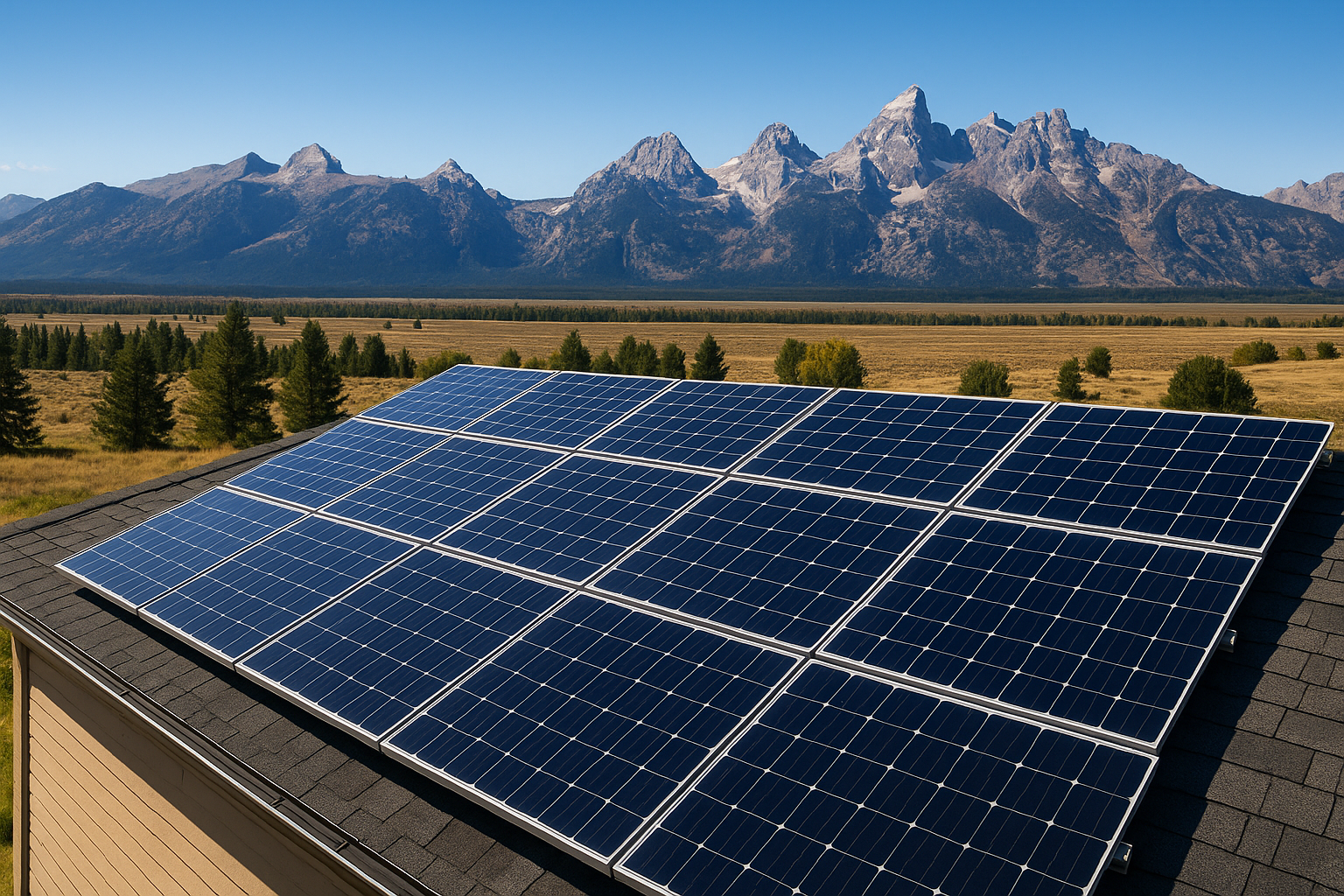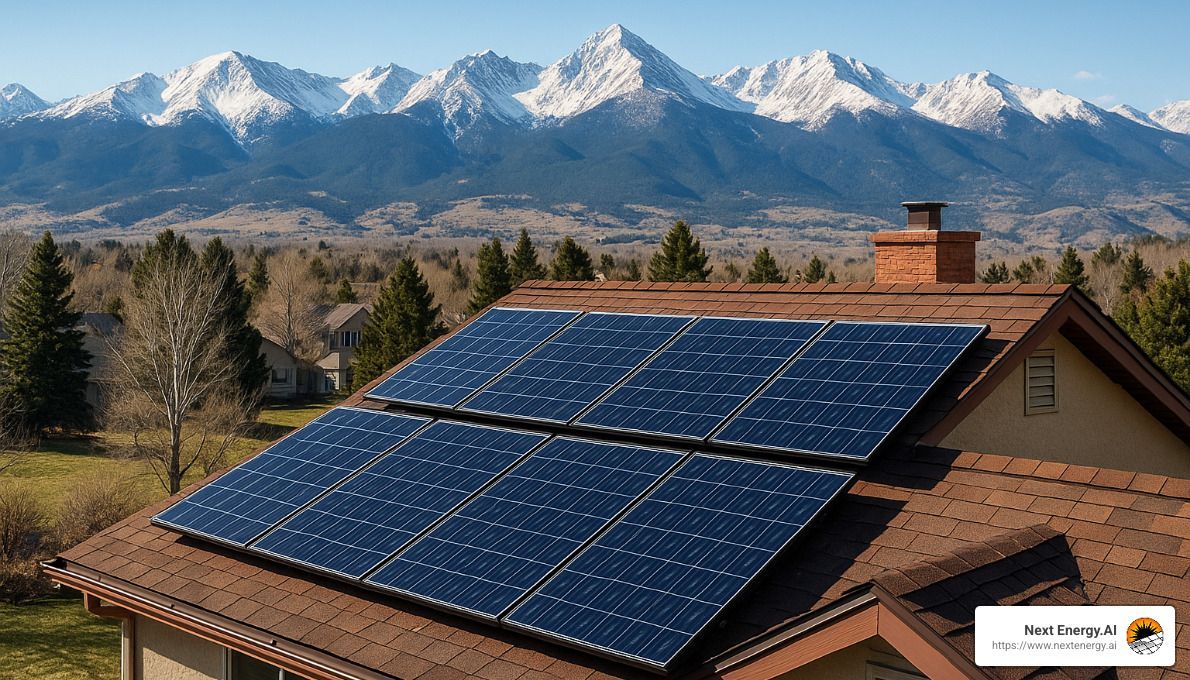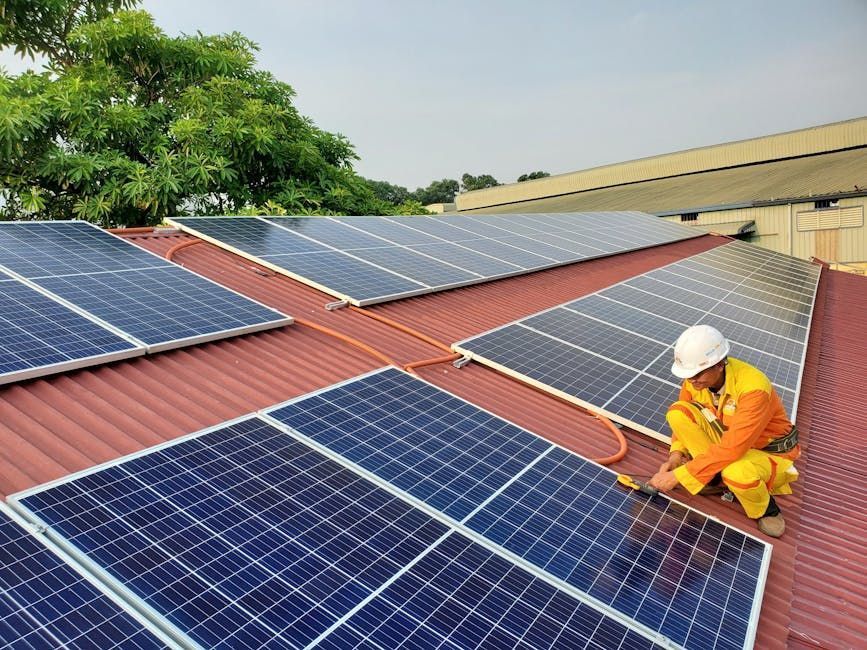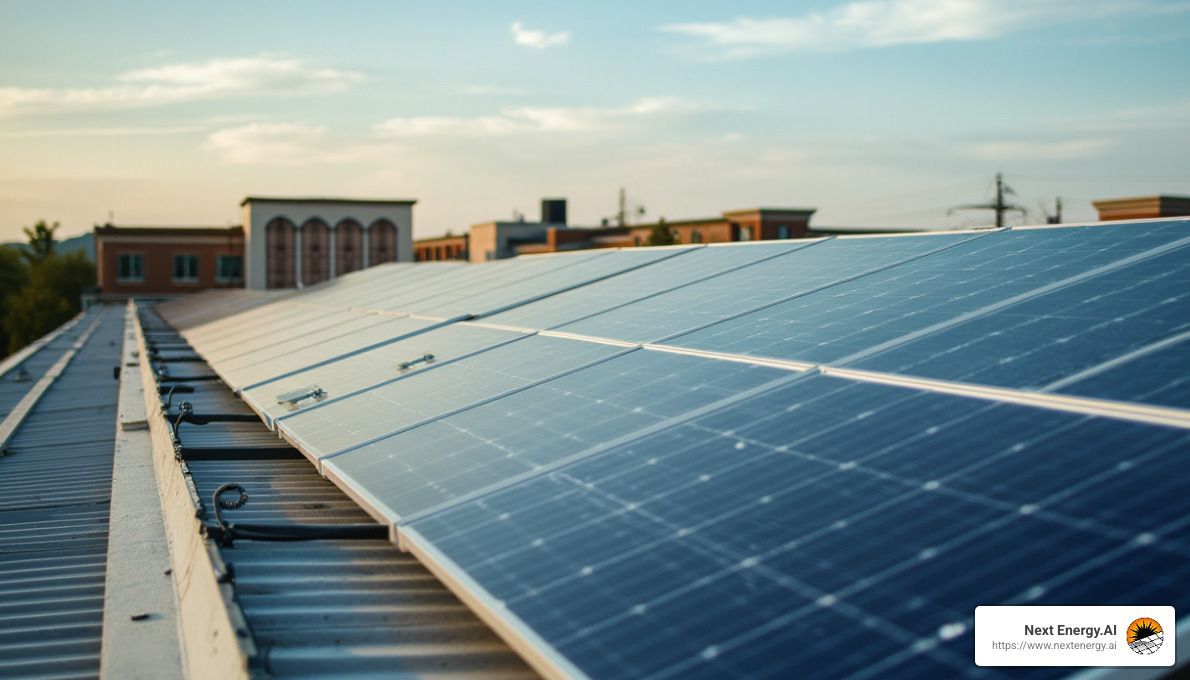Solar Energy Unplugged: Modeling and Optimization Techniques
Modeling and optimization of solar energy are crucial for advancing our use of renewable energy. These methods help improve solar energy systems, making them more efficient and cost-effective. Here's what you need to know:
- Modeling: It involves creating digital simulations to predict how solar energy systems will perform in different conditions. This helps in planning systems custom to specific needs.
- Optimization: This process refines the design and function of solar energy systems to get the most energy with the least expense, enhancing both performance and savings.
Switching to solar energy is more than an eco-friendly choice; it’s a wise financial decision, as shown by significant declines in costs and increased system efficiency.
As Spencer Gordon, I have been at the forefront of solar technology, working tirelessly to make renewable energy accessible and beneficial. With experience in modeling and optimization of solar energy, I strive to transform communities throughout Northern Colorado through sustainable power solutions.
Understanding Solar Energy Modeling
When it comes to using the power of the sun, solar energy modeling plays a pivotal role. This process involves various techniques to predict and improve the performance of solar energy systems. Let's explore some key aspects:
Solar Radiation Modeling
Solar radiation modeling is all about understanding how much sunlight hits a specific location over time. It considers factors like:
- Latitude and Elevation: These elements affect how much sunlight a location receives. For example, higher latitudes receive less direct sunlight compared to areas closer to the equator.
- Cloud Cover: This can significantly reduce the amount of solar energy available. Accurate models account for average cloud cover to predict solar potential.
By accurately modeling solar radiation, we can design systems that maximize energy capture.
Mathematical Modeling
Mathematical modeling involves using equations and algorithms to simulate the behavior of solar energy systems. These models take into account:
- System Components: Such as panels, inverters, and batteries, each with specific characteristics and efficiencies.
- Environmental Factors: Temperature, wind speed, and shading all impact solar system performance.
Mathematical models help in predicting how a solar system will perform under various conditions, allowing for better planning and design.
Performance Prediction Models
Performance prediction models are used to forecast how much energy a solar system will produce. These models consider:
- Historical Data: Past weather patterns and solar performance data help refine predictions.
- Advanced Algorithms: Tools like machine learning can improve prediction accuracy by analyzing complex datasets.
Such models are crucial for ensuring that solar systems meet energy needs and operate efficiently.
Incorporating these modeling techniques allows for more precise and efficient solar energy systems. They enable us to tailor designs to specific environments, ensuring maximum energy output and cost-effectiveness.
Next, we'll dive into optimization techniques that further improve the efficiency and sustainability of solar energy systems.
Optimization Techniques for Solar Energy
Optimizing solar energy systems is all about making them work better and more efficiently. Here, we'll look at some efficiency improvement techniques, optimization strategies, and advanced technologies that can help achieve these goals.
Efficiency Improvement Techniques
To improve the efficiency of solar energy systems, we focus on:
- High-Efficiency Panels: Using panels that convert more sunlight into electricity can significantly boost energy output. Innovations like bifacial panels, which generate electricity from both sides, are leading the way in efficiency gains. These panels can capture diffused sunlight and are especially effective in regions with high solar potential, like Saudi Arabia.
- Proper Orientation and Tilt: Positioning solar panels at the right angle ensures they capture the maximum amount of sunlight throughout the day. This involves considering the sun's path and adjusting the tilt angle seasonally.
- Minimizing Shading: Even small shadows can drastically reduce a panel's efficiency. By strategically placing panels to avoid shading from trees, buildings, or other obstructions, we can maximize their output.
Optimization Strategies
Optimization in solar energy involves using smart strategies to improve performance:
- Advanced Algorithms: Techniques like evolutionary and nature-inspired algorithms are employed to optimize the design and operation of solar systems. For instance, algorithms such as the artificial bee colony can optimize system components, as demonstrated in a renewable energy microgrid study in rural areas.
- Hybrid Systems: Combining solar with other renewable energy sources like wind or biogas can improve reliability and efficiency. Hybrid systems, which include energy storage solutions like batteries and flywheels, can deliver electricity even when sunlight is scarce.
- Real-Time Monitoring: Using sensors and smart software to monitor system performance in real-time allows for quick adjustments and maintenance, ensuring systems operate at peak efficiency.
Advanced Technologies
Technological advancements are crucial for pushing the boundaries of solar energy:
- Perovskite and Silicon PV: This hybrid approach improves solar power efficiency beyond traditional technologies. In regions with harsh conditions, like high temperatures and dust, these advanced materials can maintain high performance.
- Thermal Management: Advanced thermal management technologies help keep PV systems cool, especially in hot climates. This reduces operational temperatures and improves overall efficiency.
- Smart Grids and Energy Storage: Integrating solar systems with smart grids and energy storage solutions, such as lithium-ion batteries, improves grid stability and flexibility. This approach supports energy security and allows for better management of supply and demand.
By employing these optimization techniques, we can make solar energy systems more efficient and reliable. This not only helps in reducing costs but also maximizes the benefits of solar energy for both residential and commercial users.
Next, we'll explore how to design a solar energy system that meets specific energy needs and conditions.
Designing a Solar Energy System
Designing a solar energy system is like putting together a puzzle. Each piece—energy needs, battery capacity, inverter size, and solar panel size—must fit perfectly to ensure the system runs smoothly and efficiently.
Energy Needs
Understanding your energy needs is the first step. This involves calculating how much electricity your household or business uses daily. Look at your energy bills to find your average consumption in kilowatt-hours (kWh). Knowing this helps in deciding how large your solar system should be.
Battery Capacity
Batteries store the energy your solar panels produce, allowing you to use it when the sun isn't shining. The capacity of your battery system depends on how much backup power you want. A higher capacity means more stored energy for cloudy days or nighttime use. It's important to balance battery capacity with cost, as larger batteries can be expensive.
Inverter Size
Inverters are crucial because they convert the direct current (DC) electricity produced by solar panels into alternating current (AC) electricity, which powers your home. The size of your inverter should match the total capacity of your solar panels. If your panels produce 5 kW, your inverter should handle at least that amount. Some systems use multiple smaller inverters, called microinverters, which can be more efficient and flexible.
Solar Panel Size
The size and number of solar panels you need depend on your energy needs and available roof space. Panels are rated by their power output in watts. More panels mean more electricity, but they also take up more space. Choosing high-efficiency panels can help you get more power from a smaller area, which is useful if your roof is small or partially shaded.
By carefully considering these elements, you can design a solar energy system that meets your specific needs. This custom approach ensures you get the most out of your investment, providing reliable and sustainable energy for years to come.
Next, we'll dive into the modeling and optimization of solar energy systems, exploring how advanced technologies and algorithms can further improve their performance.
Modeling and Optimization of Solar Energy
When it comes to modeling and optimization of solar energy, integrating solar technologies with advanced modeling techniques and optimization algorithms is key. This approach not only improves the efficiency of solar systems but also maximizes their performance and cost-effectiveness.
Integration of Solar Technologies
Integration involves combining different solar technologies to create a cohesive and efficient energy system. For example, hybrid solar energy systems, which combine solar panels with other renewable sources like wind or biogas, can increase reliability. These systems ensure that energy is available even when sunlight isn't, addressing the intermittent nature of solar power.
In Saudi Arabia, for instance, the Sakaka Solar Plant uses bifacial solar panels that capture sunlight from both sides. This innovative approach boosts efficiency by utilizing the reflectivity of the surrounding environment. Additionally, robotic cleaning technologies maintain optimal performance without water, reducing operational costs.
Advanced Modeling Techniques
Advanced modeling techniques are essential for predicting and improving solar system performance. These techniques use mathematical models to simulate how different factors, such as weather conditions and shading, affect energy production. By understanding these dynamics, we can design systems that perform optimally under varying conditions.
For instance, solar radiation modeling considers factors like latitude, elevation, and cloud cover to predict how much sunlight will reach the panels. This data helps in designing systems that are well-suited to their specific locations, ensuring maximum energy capture.
Optimization Algorithms
Optimization algorithms are the brains behind fine-tuning solar energy systems. They help in finding the best configuration for solar components to achieve maximum efficiency. Algorithms can optimize everything from the angle and orientation of solar panels to the sizing of batteries and inverters.
A notable example is the use of metaheuristic techniques for optimal sizing of hybrid renewable energy systems, as seen in Egypt. These techniques, such as the artificial bee colony algorithm, are inspired by nature and help in efficiently solving complex optimization problems.
By integrating solar technologies, employing advanced modeling techniques, and utilizing optimization algorithms, we can significantly improve the performance of solar energy systems. This approach not only makes solar power more reliable and cost-effective but also paves the way for a sustainable energy future.
Next, we'll address some frequently asked questions about solar energy, including how to optimize solar energy systems and the essentials of solar radiation modeling.
Frequently Asked Questions about Solar Energy
How do we optimize solar energy?
Optimizing solar energy involves several key strategies:
- High-efficiency panels: Choosing panels with a higher efficiency rating ensures that more sunlight is converted into electricity. This means you get more power from the same amount of sunlight.
- Proper orientation: The angle and direction of solar panels are crucial. In the Northern Hemisphere, panels should generally face south to capture the most sunlight. Adjusting the tilt angle based on your latitude can also improve performance.
- Minimize shading: Even a small amount of shade can significantly reduce a panel's output. It's essential to install panels where they won't be shaded by trees, buildings, or other structures throughout the day.
What is solar radiation modeling?
Solar radiation modeling helps predict how much sunlight will reach the solar panels at a specific location. Several factors are considered in this modeling:
- Latitude: The position of a location relative to the equator affects how much sunlight it receives. Closer to the equator generally means more direct sunlight.
- Elevation: Higher elevations often receive more sunlight due to thinner atmospheric layers, which absorb less solar radiation.
- Cloud cover: Frequent cloudiness can reduce solar energy availability. Modeling takes into account historical weather data to predict average solar radiation levels.
By understanding these factors, solar radiation modeling ensures that solar systems are designed to capture the maximum possible energy.
What is the business model for solar energy?
There are two main business models for solar energy:
- Own-and-operate model: In this model, the solar energy system is owned by the user, who benefits from the energy produced and any excess energy sold back to the grid. This model requires an upfront investment but can lead to significant long-term savings.
- Electricity purchase agreement (EPA): This model involves a third-party company installing and maintaining the solar system. The user then purchases the electricity generated at a predetermined rate, often lower than traditional utility rates. This model reduces upfront costs and allows users to benefit from solar energy savings without owning the system.
By choosing the right model, businesses and homeowners can enjoy the benefits of solar energy while aligning with their financial and operational goals.
Next, we'll dig into the conclusion, where we'll explore how Next Energy.AI leverages AI to improve solar solutions and provide intelligent energy management systems.
Conclusion
At Next Energy.AI, we're all about pushing the boundaries of what's possible with solar energy. Our mission is to harness the power of the sun and transform it into a smarter, more efficient energy solution for you. How do we do this? By integrating advanced AI technology into our solar panels, turning them into intelligent energy management systems.
AI-Improved Solar Solutions
With our AI-improved solar solutions, you're not just installing solar panels; you're investing in a system that learns and adapts to your specific energy needs. Our AI algorithms analyze your energy consumption patterns and optimize the production and usage of solar energy. This means you get the most out of every ray of sunshine, custom to your lifestyle and energy demands.
Intelligent Energy Management Systems
Our intelligent energy management systems give you more control over your energy use. By integrating with home automation systems like Google Home and Amazon Alexa, our solutions create a seamless smart home ecosystem. This integration allows for real-time adjustments based on weather conditions and usage patterns, ensuring that your solar panels operate at peak efficiency.
Why Choose Next Energy.AI?
Choosing Next Energy.AI means opting for innovation, sustainability, and efficiency. Our systems not only reduce your carbon footprint but also offer significant energy savings. We're committed to providing top-tier customer service and support, ensuring that your transition to solar energy is smooth and rewarding.
Ready to start on your solar journey with us? Learn more about our comprehensive solar solutions here.
In conclusion, Next Energy.AI is dedicated to making solar energy smarter and more accessible. By leveraging AI technology, we transform traditional solar panels into intelligent systems that optimize energy use, reduce costs, and contribute to a sustainable future. Join us in using the power of the sun and taking control of your energy needs.


















